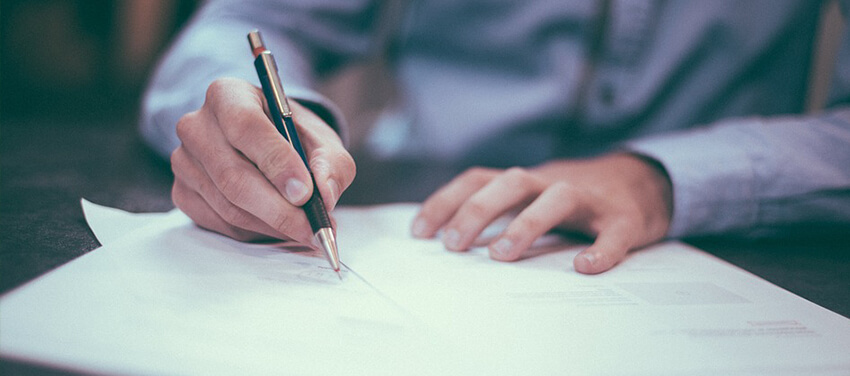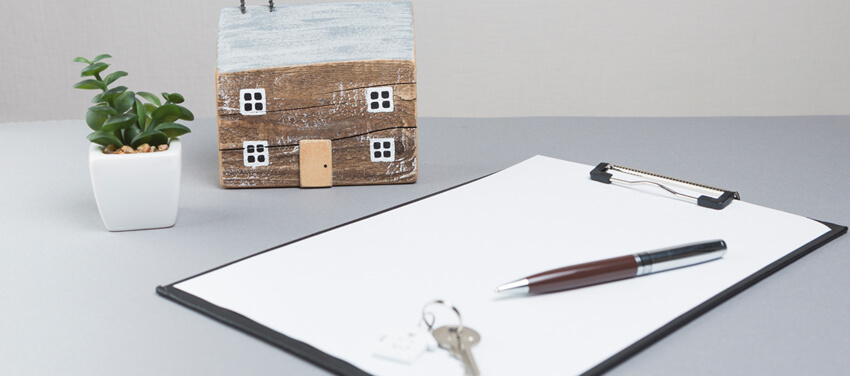A Guide To Conveyancing
If you are buying or selling a house, you will need the services of a conveyancing solicitor so it is a good idea to get a solid understanding of what conveyancing is and what is involved. This guide to conveyancing will explain what conveyancing is and the different stages of the property conveyancing process.
What is Conveyancing?
Conveyancing is the legal process of transferring property ownership from one person to another and involves all the legal and administrative work associated with the transfer. The conveyancing process starts once an offer has been accepted on a property and continues until the money has been transferred and the property purchase is complete.
Who does the Conveyancing?
You will need to hire a solicitor or a property lawyer. It is best to find one that has good experience and who specialises in property transactions. Some mortgage lenders will ask you to choose a solicitor from their list of recommended practitioners so check with your mortgage provider before you brief someone.
Technically it can be possible to carry out conveyancing yourself but it is not recommended as it is very complicated and most mortgage lenders will insist that conveyancing solicitors are used.
How to find/choose a good property lawyer or conveyancing solicitor
To find the best lawyer or solicitor for your property purchase, spend some time shopping around to get quotes. Compare quotes to make a shortlist – remembering to consider the reputation of the provider as well as their fees.
Your estate agent will likely recommend a conveyancing solicitor to you but it is not necessary to use their recommendation which can often be overpriced due to their referral fees which will be added to the price. Instead, ask for a recommendation from someone that’s actually used their service or find reviews and referrals online.
The Conveyancing Process for Buying a Property
After a buyer has had an offer accepted on a property, the conveyancing process begins. Here is a summary of the process:
The buyer’s conveyancer is instructed on acceptance of the offer.
The buyer then arranges a survey on the property, and makes an application for their chosen mortgage (if needed). The conveyancer should check the conditions of the mortgage for the buyer.
The buyer’s conveyancer will confirm instructions in writing, setting out the terms of business, conveyancing quotes and costs.
The buyers conveyancer will contact the seller’s conveyancer to obtain the contract, check the contract and make any enquiries to the seller and their conveyancer.
Once satisfied, the conveyancer will carry out the necessary searches and obtain the mortgage offer (if relevant).
The buyer’s conveyancer will review the contract, the replies to their enquiries, search results and mortgage offer and report back to the buyer.
The buyer will need to consider the report and raise any questions as required.
Once the buyer is satisfied with the contract, the deposit is be paid to the buyer’s conveyancer to prepare for the exchange of contracts.
A completion date is then agreed between the seller and buyer and contracts are formally exchanged. Both parties are now legally committed to the transaction.
The buyer’s conveyancer will need to prepare a draft version of the transfer deed and completion form and then send to the seller’s conveyancer for approval.
A completion statement will then be produced by the buyers conveyancer.
An application will be made to the buyer’s mortgage lender for the mortgage loan.
On completion, at the agreed time, the seller will vacate the property by the agreed time the proceeds of sale is sent to the the seller’s conveyancer.
The keys are then handed to the estate agent (or direct to the buyer) and the title and transfer deeds are sent to the buyer’s conveyancer.
Any stamp duty owed is paid to HMRC.
The buyer’s conveyancer will register the property in the name of the buyer at The Land Registry.
The buyer will then receive a copy of the registered title from The Land Registry.
Please note that things do always go to plan, there may be delays and the process may not follow the exact order above.
The Conveyancing Process for Selling a Property
After a seller has accepted an offer on their property, the conveyancing process begins for selling. Here is a summary of the process:
The seller instructs the conveyancer who sets out in writing, the terms and conveyancing costs.
The seller’s conveyancer carries out proof of identity checks and sends out property information forms and fittings and contents forms to the seller for completion and return
The seller’s conveyancer obtains title deeds or official copies of the title register as well as details of any amount outstanding on the mortgage.
The draft contract and supporting contract documentation is prepared by the seller’s conveyancer and sent to the buyer’s conveyancer to check and raise any pre-contract enquiries.
The seller and their conveyancer then answer pre-contract enquiries.
The buyer’s conveyancer accepts results from their searches and confirms the buyer is happy and in receipt of a mortgage offer (if relevant).
The seller and the buyer discuss and agree on a completion date and exchange the contracts
The seller’s conveyancer checks the transfer deed and sends to the seller for signature and completion.
The buyer’s conveyancer will send the proceeds of sale to the seller’s conveyancer who will arrange for the keys to be released to the buyer.
The seller’s conveyancer then sends the title deeds and transfer deed to the buyer’s conveyancer.
The seller’s conveyancer will pay the estate agent any fees that are due, repay any balance owing to the existing mortgage lender and take payment for their conveyancing costs.
Please note that things do always go to plan, there may be delays and the process may not follow the exact order above.
Conveyancing Costs
The cost of conveyancing largely depends on the value of the property you are buying or selling. To give you an idea of costs, the average conveyancing cost in the UK is around £850. The charge is for the conveyancer’s time, letters, telephone calls and any conveyancing fees that need to be paid for local authority searches and Land Registry.
There is the option of using an online conveyancer which will usually be cheaper than a traditional conveyancer. You can request a quote from conveyancers to help you budget.
When comparing quotes it is important to make sure that you are comparing like with like because not all firms format their quotes in the same way. Using a firm that has a ‘no move no fee’ policy will save you from losing money should the deal collapse.
When do you pay conveyancing fees?
A deposit is usually requested to cover the cost of searches. The balance will then need to be paid to allow completion to take place. You may be required to pay the full amount up front however, especially if exchange and completion are close together.
A typical conveyancing timeline
The timeline of a property purchase differs due to a range of factors but the following is an example of a typical conveyancing timeline.
- Weeks 1 to 2
After an offer is accepted, a conveyancer is sought and instructed by the buyer. They commence the conveyancing process by obtaining the draft contract pack from the seller and raise pre-contract enquiries.
- Weeks 3 to 4
The conveyancer requests the relevant searches and the seller’s solicitor advises on the contract enquiries.
- Weeks 5 to 6
The buyer will be sent a property report and documents to sign and once the conveyancer confirms all is in order and the buyer is happy to proceed, exchange and completion dates can be discussed and agreed upon.
- Weeks 7 to 8
When a completion date has been agreed and the conveyancers are ready, the contracts can be formally exchanged and the buyer and seller are legally committed to proceed.
- Weeks 9 to 10
Completion day can happen soon after exchange has occurred but there is usually a gap of at least 7 days to allow for final checks. On completion day, the funds will be transferred to the seller’s conveyancer.
Once funds have cleared, the transaction is completed and the new owner can collect keys and move in. The buyer’s conveyancer will then handle post completion procedures such as payment of SDLT and registration of ownership.
Summary
The conveyancing process can be quite complex so it is advised that you find a good conveyancing solicitor who has sound experience in dealing with residential property purchases. When applying for a mortgage, many lenders will insist that you use a conveyancer that they have on their approved panel so make sure to check your lender and conveyancer are compatible.





